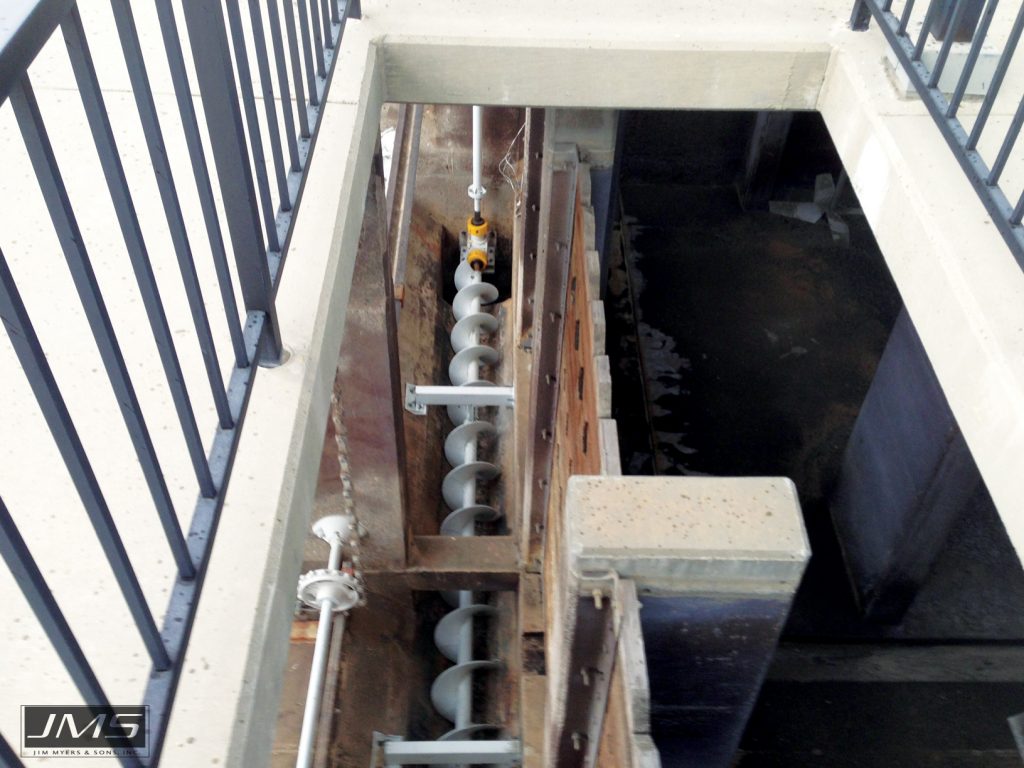Submerged grit collection screws are used in Municipal Wastewater Treatment plants. Grit screws are used in a classification process most often in aerated grit tanks to remove grit from water. These screws are conveying grit from the tanks/basin into a trap, sump, or a well. This might require further conveyance with the use of grit pumps or air lift pumps. Unlike the use of a grit classifier that can separate and convey the grit above grade.
Typical Configurations for a Submerged Grit Collection Screws
- Wet chain
- Dry chain
- Direct drive

Shafted Submerged Grit Collection Screws
Shafted screw conveyors are most commonly used in submerged grit collection applications. With a shafted screw conveyor there is no wear liner like shaftless screws need. A shafted screw conveyor in this application will need hanger bearings when the length is over 18 ft long. These hanger bearings not only add support to the screw but structural integrity. This allows the screw to have less wear over time and a longer life span. Shafted screw conveyors require no field welding.
Shaftless Submerged Grit Collection Screws
Shaftless screw conveyors require the use of hold down bars. These are typically 4 feet long and are used every 12 feet. Just like all other shaftless screw conveyors applications a shaftless screw conveyor requires the uses of a wear liner. A wear liner for grit collection application is either stainless steel or 836 steel. There are also wear bars stitched welded to the liner. When a shaftless screw conveyor gets too long it will require field welding. The longer and greater diameter the screw gets, the more wear the liner will experience.
Learn more about Submerged Grit Collection Screw by Watching This Presentation
- Typical configurations
- Trough selection
- Design considerations
- And more
Jim Brettman has been with JMS for 9 years and serves on the sales side of the business as a Sr. Application Engineer focusing on the JMS Delta-SEPARATION. He has a BS in Civil Engineering from the University of Tennessee and worked in various positions with Exxon Co. for 12 years. After locating to Charlotte, Jim ran his own business for seven years as a rep for industrial wastewater treatment equipment and systems. Jim is proud to have worked closely with Dave Myers in closing the largest single sale by JMS to date, the Boston Deer Island Delta-SKIMMER (scum pipe) project. Jim says, “I thoroughly enjoy working with a Company that embodies integrity, quality, and service as its mantra, and working with our Reps to increase the sales of JMS products.”
